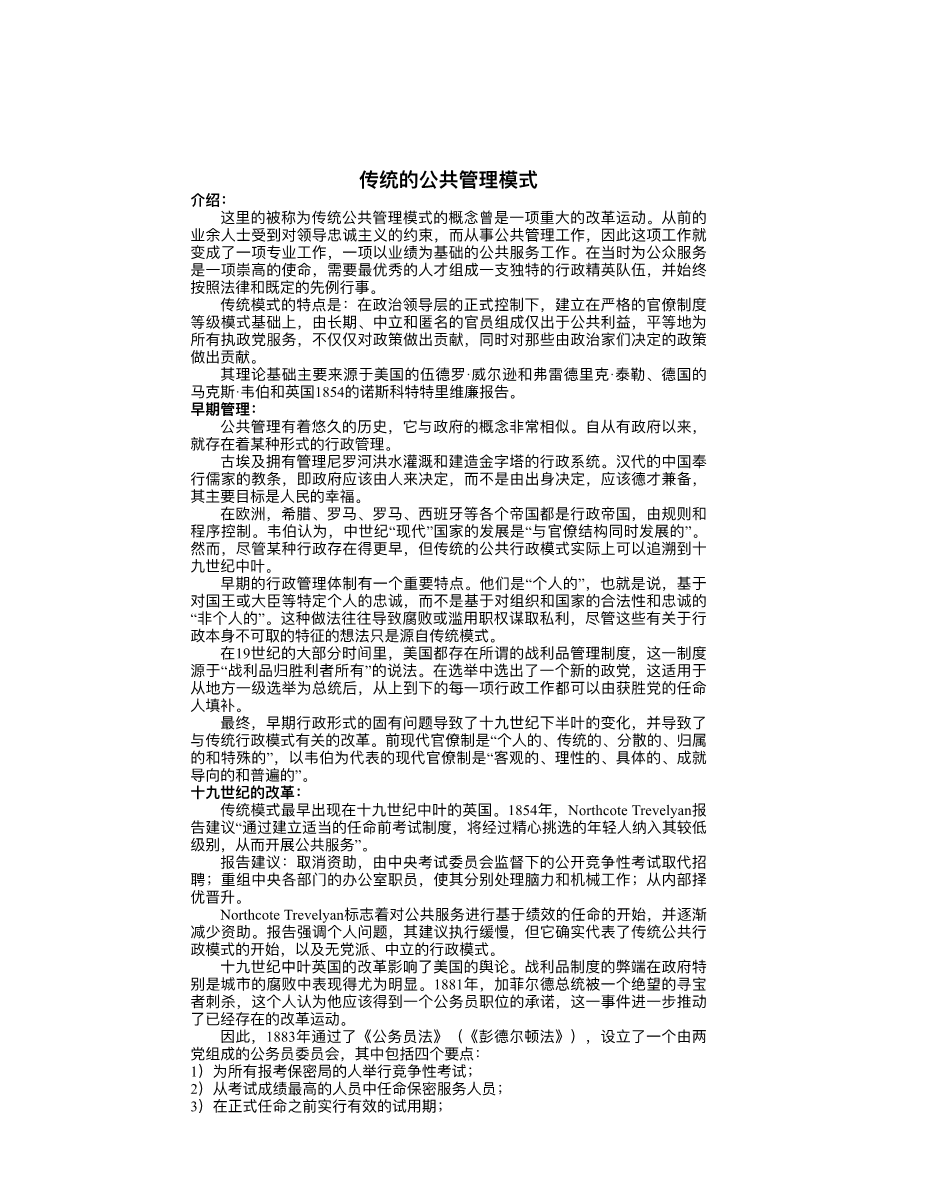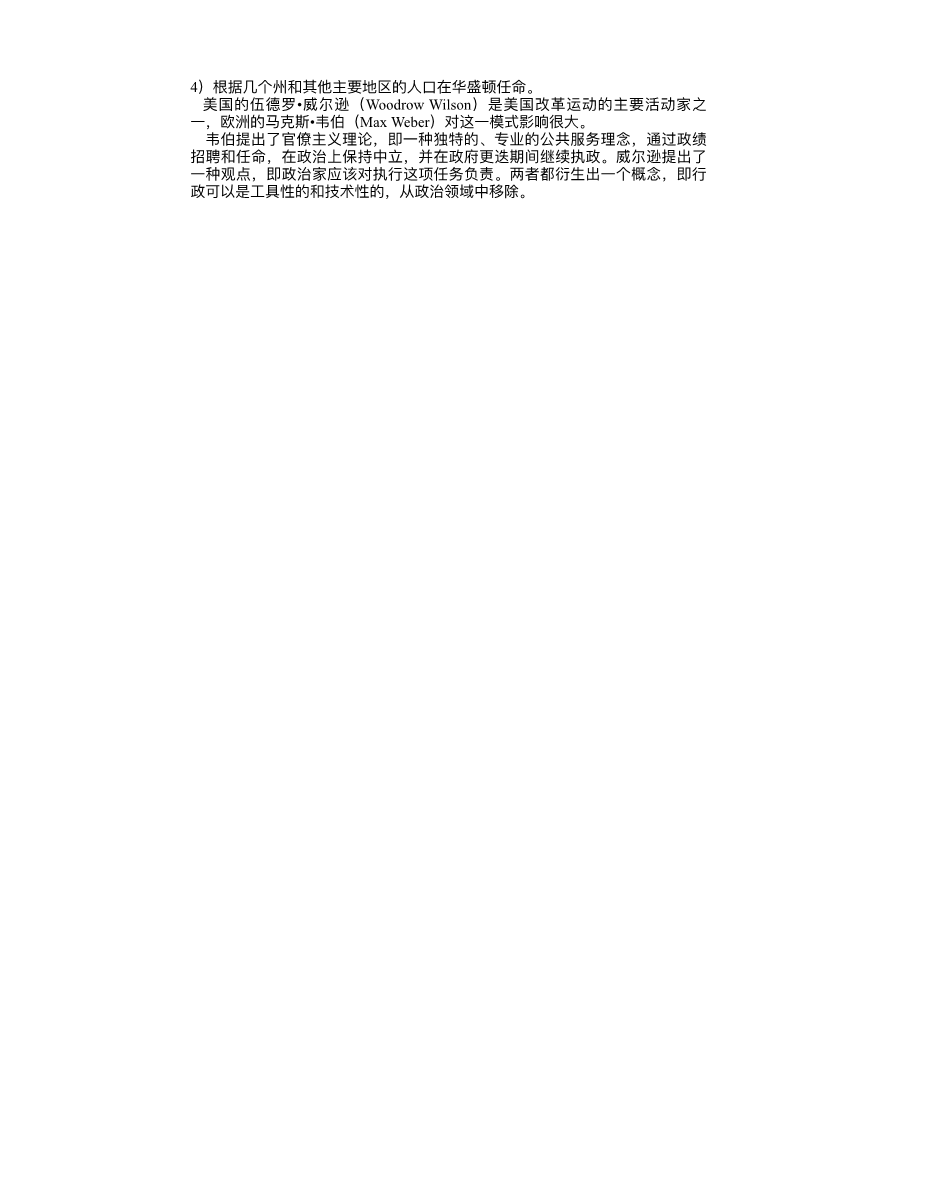The Traditional Model of Public Administration
Introduction
What is here called the traditional model of public administration was once a major reform movement. Where previously amateurs bound by personal loyalties to leaders carried out public administration, the task became a professional occupation which was carried out by a distinct merit-based public service. Serving the public at that time was a high calling, one that required the best people available to form a distinct administrative elite and to act always according to the law and established precedents.
Public administration as both theory and practice began in the late nineteenth century, became formalized somewhere between 1900 and 1920, and lasted in most western countries largely unchanged until the last quarter of the twentieth century. But since the early 1980s, governments have moved away from many of its precepts.
The traditional model can be characterized as: an administration under the formal control of the political leadership, based on a strictly hierarchical model of bureaucracy, staffed by permanent, neutral and anonymous officials, motivated only by the public interest, serving any governing party equally, and not contributing to policy but merely administering those policies decided by the politicians.
Its theoretical foundations mainly derive from Woodrow Wilson and Frederick Taylor in the United States, Max Weber in Germany, and the Northcote—Trevelyan Report of 1854 in the UK.
Early administration
Public administration has a long history, one paralleling the very notion of government. Some form of administration has existed ever since there have been governments.
Administrative systems existed in ancient Egypt to administer irrigation from the annual flood of the Nile and to build the pyramids. China in the Han dynasty adopted the Confucian precept that government should be handled by men chosen, not by birth, but by virtue and ability, and that its main aim was the happiness of the people.
In Europe the various Empires—Greek, Roman, Holy Roman, Spanish and so on—were all administrative empires, controlled from the enter by rules and procedures. The development of lsquo;modernrsquo; states in the Middle Ages is argued by Weber to have lsquo;developed concomitantly with bureaucratic structuresrsquo;. Although some kind of administration existed earlier, however, the traditional model of public administration really dates from as late as the mid-nineteenth century.
Earlier systems of administration shared one important characteristic. They were lsquo;personalrsquo;, that is, based on loyalty to a particular individual such as a king or a minister, instead of being lsquo;impersonalrsquo;, based on legality and loyalty to the organization and the state. Their practices often resulted in corruption or misuse of office for personal gain, although the very idea that these are undesirable features of administration itself only derives from the traditional model.
In the US for most of the nineteenth century, there existed what was termed the spoils system of administration, derived from the saying, lsquo;to the victor belong the spoilsrsquo;. After an election in which a new party was elected—and this applied to election from the local level to the Presidency—every administrative job from the top to the bottom could be filled by an appointee from the winning party.
Eventually, the inherent problems of earlier forms of administration led to changes in the latter part of the nineteenth century and to the reforms associated with the traditional model of administration. Pre-modern bureaucracies were lsquo;personal, traditional, diffuse, ascriptive and particularisticrsquo; were modern bureaucracies, exemplified by Weber, were to become lsquo;impersonal, rational, specific, achievement-oriented and universalisticrsquo;.
The reforms of the nineteenth century
The beginning of the traditional model is best seen in mid-nineteenth century Britain. In 1854, the Northcote-Trevelyan Report recommended that lsquo;the public service should be carried out by the admission into its lower ranks of a carefully selected body of young manrsquo; through lsquo;the establishment of a proper system of examination before appointmentrsquo;.
It recommended: the abolition of patronage and the substitution of recruitment by open competitive examinations under the supervision of a central examining board; reorganization of office staffs of central departments in broad classes to deal with intellectual and mechanical work respectively; and filling higher posts by promotion from inside based on merit.
Northcote-Trevelyan signals the start of merit-based appointments to the public service and the gradual decline of patronage. The Report emphasizes personal matters and its recommendations were implemented slowly, but it does represent a beginning to the traditional model of public administrations, and non-partisan, neutral administration.
The UK reforms of the mid-nineteenth century influenced opinion in the US. The evils of the spoils system were all too evident in the corruption endemic in government, particularly in the cities. In 1881, President Garfield was assassinated by a disappointed spoils seeker—someone who thought he had been promised a civil service position—and this event gave further impetus to the movement for reform that was already in existence.
As a result, in 1883, the Civil Service Act (the Pendleton Act) was passed which established a bipartisan Civil Service Commission and contained four key points:
1) the holding of competitive examinations for all applicants to the classified service;
2) the making of appointments to the classified
剩余内容已隐藏,支付完成后下载完整资料


英语译文共 2 页,剩余内容已隐藏,支付完成后下载完整资料
资料编号:[254039],资料为PDF文档或Word文档,PDF文档可免费转换为Word
原文和译文剩余内容已隐藏,您需要先支付 30元 才能查看原文和译文全部内容!立即支付


